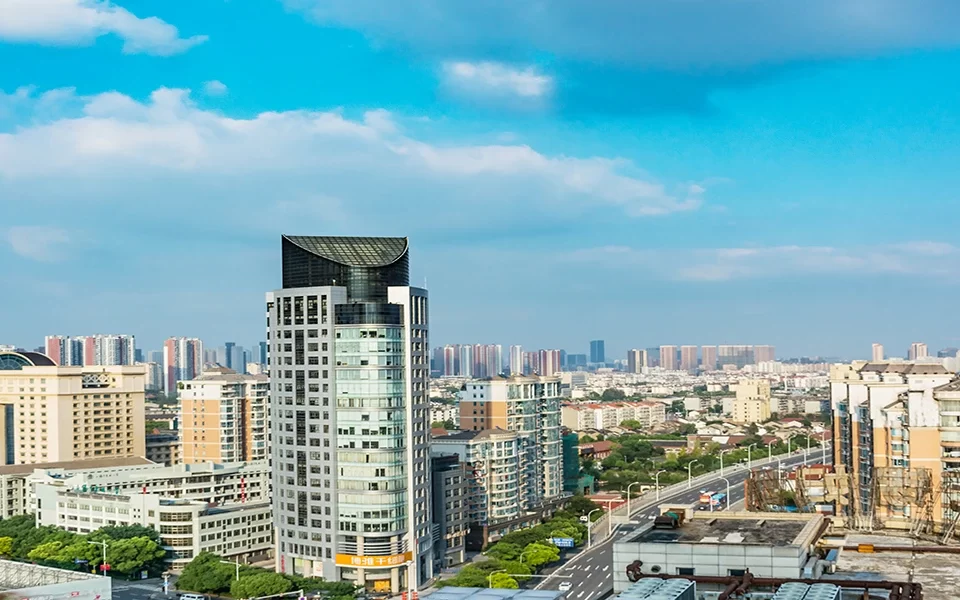How Market Trends Influence Real Estate Investments

Why Buying Flats in Mumbai Is a Great Investment Opportunity
May 2, 2025
Why Choose Ambit Realtors? Consider Their Unique Selling Points
May 6, 2025The real estate sector doesn’t operate in a vacuum. From stock market performance to interest rate movements, and from changes in government policies to global events—everything leaves an impact. These dynamic market trends in real estate help shape buyer sentiments, project valuations, and long-term returns.
In a city like Mumbai, where demand meets limited supply, it becomes even more important for investors to stay informed. Whether you're investing in a residential flat or a commercial office space, keeping an eye on market trends in real estate can help you make smarter, more confident decisions.
In this blog, we’ll explore what shapes real estate investment decisions today, how to study the market yourself, and how Ambit Realtors empowers buyers with the right insights.
Market Trends That Influence Real Estate Investments
Understanding the forces that shape the property market can help investors make confident and well-timed decisions. Below are some key market trends in real estate that play a significant role in influencing real estate investment in Mumbai and across India:
1. Interest Rate Fluctuations
It’s one of the most direct influences on real estate investment. The interest rate is decided by the Reserve Bank of India (RBI). When the RBI reduces the repo rate, banks typically lower home loan interest rates, making borrowing cheaper. This often leads to a rise in property purchases as EMIs become more manageable. On the other hand, a rate hike may discourage buyers due to increased borrowing costs.
Example: During the pandemic, reduced interest rates encouraged a surge in housing demand across metro cities.
2. Urban Infrastructure Developments
New infrastructure projects—like metro lines, expressways, or coastal roads—can significantly boost the desirability of surrounding areas. They improve accessibility, reduce travel time, and increase the overall convenience of living in that location. Investors often eye such regions early to benefit from price appreciation.
Example: The launch of Mumbai Metro Line 7 between Dahisar and Gundavali increased property interest in Goregaon and nearby areas.
3. Government Policies and Tax Benefits
Policies such as reduced stamp duty, GST waivers on affordable housing, or schemes like PMAY make homeownership more accessible. These benefits can directly boost buyer sentiment and increase demand. Moreover, tax deductions under Sections 80C and 24(b) make real estate investment more financially viable.
Example: Maharashtra’s temporary stamp duty cut in 2021 resulted in a record number of registrations within a few months.
4. Economic Conditions
Overall economic health, employment rates, and income growth all have a cascading effect on the property market. When people feel financially secure, they are more likely to invest in long-term assets like real estate.
Example: Post-2023, India’s strong GDP growth and rising disposable incomes helped renew interest in real estate investment, especially in Tier-1 cities.
5. Rental Yields and ROI Expectations
Investors often calculate potential returns before making a property purchase. High rental yields indicate strong demand in the area and justify the investment. Commercial spaces near business districts or residential areas with high student/professional populations usually offer attractive returns.
Example: Properties in BKC and Lower Parel offer competitive rental income, making them a preferred choice for rental-focused real estate investment.
6. Supply and Demand Gap
When demand is more than supply in a particular location, property prices are expected to rise. Limited land availability in urban centres like Mumbai often creates this imbalance. This makes early investment in underdeveloped or emerging zones a smart move.
Example: The lack of new launches in areas like Santacruz East has led to a price surge due to increased demand and limited inventory.
How to Do Real Estate Market Analysis as a Homebuyer or Investor
You don’t always need a professional to perform a basic real estate investment analysis. Here are some simple steps you can follow:
1. Research the Locality
Look into current rates, upcoming infrastructure, and overall development plans.
Example: Check if a location has a metro station under construction—this could boost property value soon.
2. Compare Projects
Compare 3-4 nearby projects for price per sq. ft., amenities, and builder reputation.
Example: Two projects in the same area might differ in pricing based on brand trust and amenities offered.
3. Track Price Trends
Use real estate portals to check historical price movement in a given area.
Example: If prices have consistently risen over 3 years, it could signal a stable real estate investment.
4. Evaluate Connectivity and Infrastructure
Good access to roads, railways, schools, and hospitals often ensures better resale value.
Example: A property 10 minutes from a highway usually attracts higher buyer interest.
5. Check Rental Demand
Browse rental listings in the area to know how quickly flats are rented and at what rate.
Example: High rental demand indicates a strong investment potential, especially for salaried buyers.
6. Read Builder Reviews
Always read customer feedback and delivery timelines before choosing a developer.
Example: Look into whether past projects were delivered on time and if promised amenities were provided.
7. Understand Government Plans
Keep an eye on Smart City developments or proposed SEZs, which can improve long-term value.
Example: Upcoming SEZ zones near Navi Mumbai have caught attention for long-term real estate investment.
These steps give you a clearer view of market trends in real estate and help you invest with confidence.
Understanding market trends in real estate allows investors to make more informed decisions and avoid costly mistakes. From interest rate changes to local infrastructure developments, each trend adds a new layer to how you should evaluate your real estate investment.
At Ambit Realtors, we believe in empowering homebuyers with clarity and the right information. Whether you're a first-time buyer or a seasoned investor, our team ensures you know your rights, understand your options, and make the most of your investment journey.
If you're looking to invest in a well-connected, thoughtfully designed residential project in Mumbai, Ambit Vista is worth exploring. Backed by smart planning and market understanding, it’s built for both comfort and long-term value.





